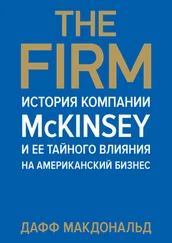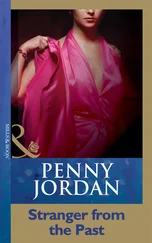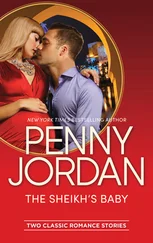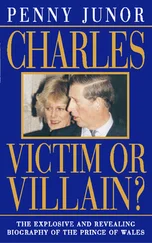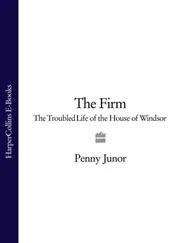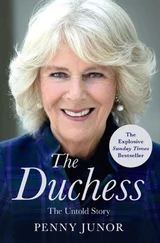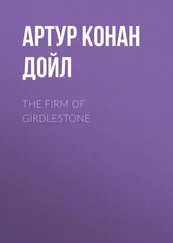The Queen’s will be a very tough act to follow but the Prince of Wales has great strengths and rightly has many fans – but he was damaged by the breakdown of his marriage to Diana and by his determination at all costs to cling on to Camilla Parker Bowles. It damaged him and it damaged the monarchy. A stronger man would have put the greater good of the institution before his own personal happiness – as his mother, in the same situation, almost certainly would have done.
But he did even greater damage by failing for so long to put a ring on Camilla’s finger when the majority of the public had so obviously come to accept the situation. It left the way open for so much debate, so much criticism. Shortly before the engagement was announced in February 2005, a powerful group of MPs, led by Alan Williams, a known republican, grilled the Prince’s accountants about how he spent his income from the Duchy of Cornwall and how much Charles was paying to support his mistress. He was beginning to take on the air of a victim, and victims attract bullies.
And the situation left so much uncertainty about the future. The Queen’s eightieth birthday in April in 2006 was approaching and although she enjoys the best of health – and if she lives as long as her mother, might have another twenty useful years or more to go – the prospect of Charles being crowned with Mrs Parker Bowles sitting four rows back in Westminster Abbey – or even, on his insistence, at the front – would have caused constitutional mayhem.
Their marriage at Windsor Castle on 9 April 2005 settled all that. It began to heal many wounds that had been festering for years and tied up a host of uncomfortable loose ends. Charles had insisted that he wanted Camilla to be seen as a legitimate part of his life. At last she was and the arguments of whether it was right or wrong for the country, good or bad for the boys, what kind of service it should have been, whether she should have been called HRH The Duchess of Cornwall or something more low-key, and what the Princess of Wales would have thought, all disappeared. The public didn’t want her to be Queen and we were told she wouldn’t be. When the time comes she will be The Princess Consort and have much the same role as the Duke of Edinburgh has in relation to the Queen. There may be opinion polls on whether she should, in fact, be Queen rather than Consort when Prince Charles ascends the throne – by then, it is my guess that the public will be perfectly content for her to be called Queen – and more opinion polls on whether, now he is married to a divorcee, he should still be King, but there is nothing new in that debate.
The wedding was a triumph. It took place a day later than originally planned because the date clashed with the funeral of Pope John Paul II in Rome. The Pope’s death and the Vatican’s choice of date for the funeral gave the doom-mongers still more reason to suggest the wedding was jinxed but the plans were moved seamlessly to the following day, a Saturday, and despite a freezing cold day and fears that there would be protests at worst and apathy at best, it was a great day. Camilla looked endearingly nervous but beautiful in an oyster-coloured Robinson Valentine creation and hat by Philip Treacy and, despite the temperature, lingered chatting to well-wishers. Charles looked happier than he has looked for years, the Queen embraced her new daughter-in-law with a witty speech, the boys looked delighted and the critics were forced to eat their words. The wedding was a resounding success and proved a significant turning point.
There had been endless debate about the arrangements and the legality of the marriage and suggestions that the Church had bent the rules. Clarence House was accused of bungling incompetence and, to everyone’s frustration, the Queen refused to attend the civil ceremony, thus fuelling the notion that she was still against the match. She didn’t give her reasons – she never does – leaving room for speculation, but the fact is she has never attended a registry office wedding, and as Supreme Governor of the Church of England, possibly never will. She was at the blessing afterwards and hosted a reception for Charles and Camilla in the State Apartments at Windsor Castle – neither of which she would have done if she had being wanting to express her disapproval.
But, on the day, the criticism and sniping quietly evaporated. They became man and wife in a twenty-minute private ceremony in the local registry office, the Ascot Room at the Guildhall in Windsor, just like any ordinary couple. The ceremony, conducted by the Royal Borough’s Superintendent Registrar, Clair Williams, began at 12.30 p.m. with only family and close friends invited – twenty-eight in all – and their elder children Prince William and Tom Parker Bowles acting as witnesses. The Service of Prayer and Dedication in St George’s Chapel, which followed at 2.30 p.m., conducted by the Archbishop of Canterbury, Rowan Williams and the Dean of Westminster, David Conner, was a much more public affair: television cameras and eight-hundred of their closest friends. Outside, the world’s media were kept at arm’s length and stationed at vantage points all over the town, in makeshift studios, on hotel balconies, on the streets and in shop windows that overlooked some part of the route where they could glimpse some of the action or even just the guests arriving. It was a roll call worth glimpsing: the cream of Church and State, foreign royals, the great and the good, and celebrities from every field.
At 5.30 a.m. that day, when I arrived in Windsor to talk on BBC Breakfast , there was one brave family who had camped overnight opposite the Guildhall and one couldn’t help thinking of the hundreds who had camped out along the route between Buckingham Palace and St Paul’s Cathedral for the wedding twenty-four years before. Security was tight, but by 10.00 a.m. there was a still only a smattering of people and it looked as though the public’s overriding emotion that day was going to be apathy. Not so. Half an hour later the street, closed to traffic for the day, had suddenly filled to bursting, people of every age chatted excitedly with strangers, hemmed in behind police security barriers, all, with the exception of a couple of protesters, in party mood, delighted that Charles had finally taken the plunge and wed the woman he has loved for over thirty years.
FORTY-FOUR
The Camilla Factor
On New Year’s Day, 2006, The Sunday Times ran a light-hearted feature titled ‘Camilla: The It Girl of 2006’. Their reporter had consulted futurologists about the year ahead and discovered that the ‘Rottweiler’ had made an astonishing turnaround. Marian Salzman, J Walter Thompson’s advertising superstar in America, was confidently predicting that ‘Camilla is going to be the next great lifestyle icon. Just look at that fabulous creature,’ she said, and to emphasise her point, ‘Look at the young princesses today – Beatrice, Zara and whoever. No one cares. All the lights are turned on this fifty-eight-year-old woman. Camilla tells us almost everything we need to know about where society is headed. I honestly believe that we’ll soon start seeing communities of older newlyweds being built because love over fifty doesn’t feel stigmatised any more. Camilla makes it look wonderful.’
Apparently she was not alone. Tom Bentley, director of the political think tank Demos, said ‘We’re witnessing the dawn of a new golden age for baby boomers. Camilla’, he laughed, ‘could definitely be a pin-up.’
The article may have been slightly tongue in cheek but the interest in Camilla and the admiration for her since she wed her prince has been infinitely greater than anyone might have predicted. In the Prince’s office it is known as ‘the Camilla factor’. From the morning she had to be dragged out of bed – such were her nerves – on the day of her wedding, she has won admirers everywhere she has been and, working alongside the Prince, chatting, smiling and co-operating with photographers, she has given a much-needed boost to the Prince of Wales’s profile.
Читать дальше
Конец ознакомительного отрывка
Купить книгу


